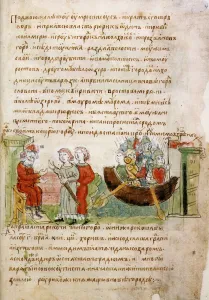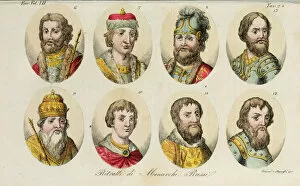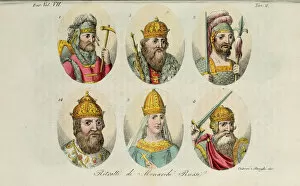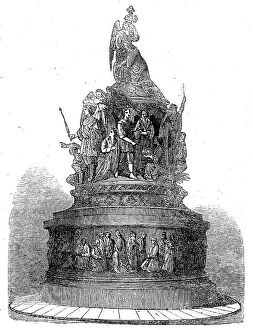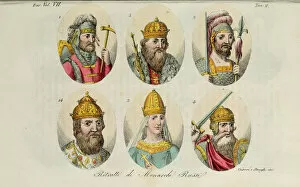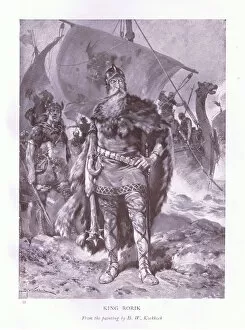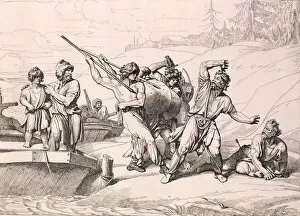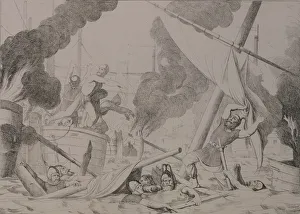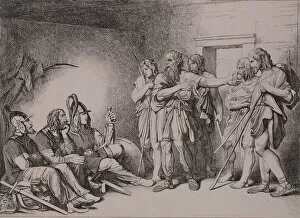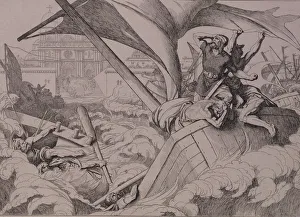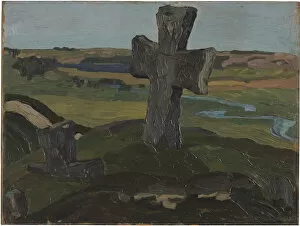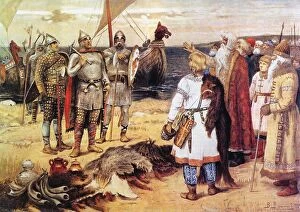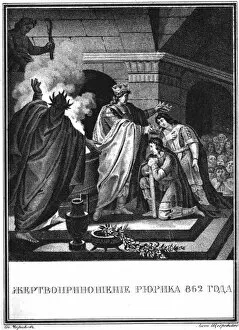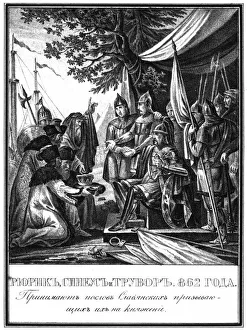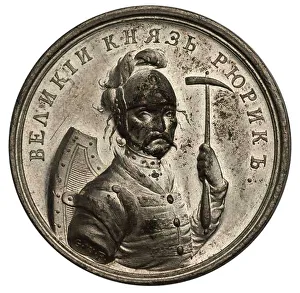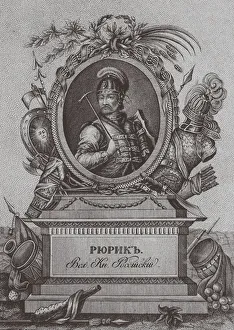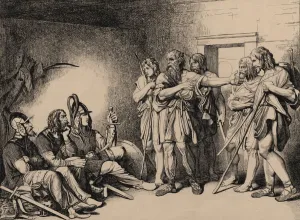Rorik Collection
"Rorik: Tracing the Legacy of Russian Monarchy" In the vast tapestry of Russian history, Rorik stands as a pivotal figure
All Professionally Made to Order for Quick Shipping
"Rorik: Tracing the Legacy of Russian Monarchy" In the vast tapestry of Russian history, Rorik stands as a pivotal figure, connecting generations of rulers and leaving an indelible mark on the nation. From his legendary origins to the reigns of Yaroslav, Sviatoslav II, Sviatopolk, Vladimir Monomakh, Yuri I, Ivan II, Dmitry Donskoy and Ivan III - each name resonates with power and influence. Rurik's arrival in Kiev marked the beginning of a dynasty that would shape Russia for centuries to come. His successors like Igor of Kiev and Olga continued his legacy by expanding their territories and establishing diplomatic relations with neighboring lands. Under Sviatoslav's rule, Russia witnessed both military triumphs and territorial losses but emerged stronger than ever. Vladimir the Great's conversion to Christianity brought about a cultural revolution that forever changed Russian society. The grandeur reached its zenith during Ivan IV's reign when he earned the title "The Terrible, " leaving an unforgettable imprint on history. Through captivating artworks such as Luigi Giarre's portraits from 1831 or Vasnetsov's depiction before 1912 depicting Rurik’s arrival in Staraya Ladoga alongside his brothers; we catch glimpses into this rich heritage. These masterpieces transport us back to significant events like "The Death of Askold and Dir" or "The Invitation of Varangians, " showcasing moments etched deeply into Russia’s collective memory. Even though time has passed since these historical events occurred – Greek fire during Constantinople’s siege or Rus fleet destruction – their impact remains palpable today. The enduring symbolisms found in Izborsk’s Truvors Cross remind us that traditions endure through generations. As we delve into these stories woven together by bloodlines and conquests alike, we uncover not just tales but also lessons from the past.

